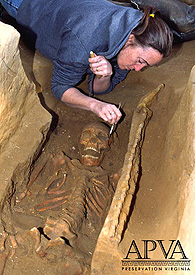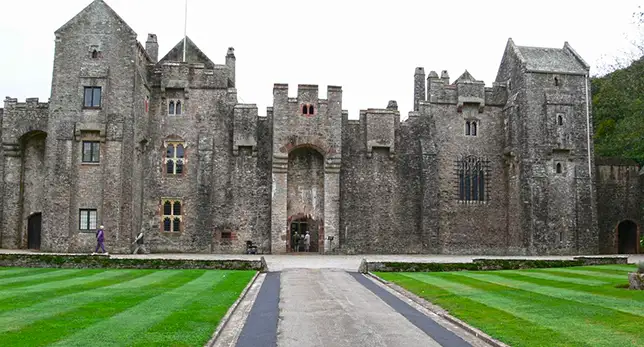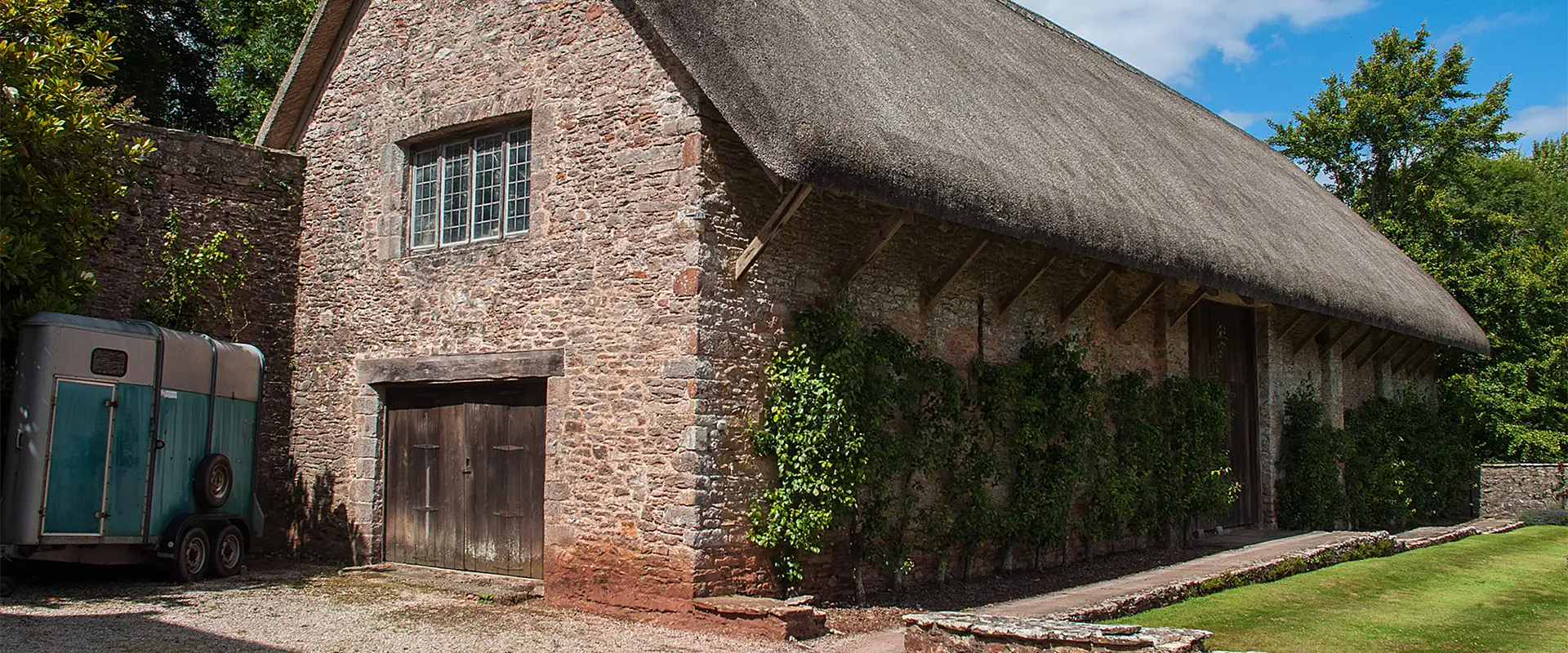 Bartholomew Gosnold, co-Captain with Bartholomew Gilbert on the discovery/exploration voyage to Cape Cod and the Islands, subsequently joined the London Company’s founding voyage to Jamestown where he died of complications from an apparently accidental gunshot wound four months after the landing, in August 1607. The lead musket ball embedded in his knee caused an infection that killed him within a week of his being accidentally shot during a parade drill exercise. His skeleton has been exhumed, identified by DNA matching, and is now visible in the Jamestown Museum.
Bartholomew Gosnold, co-Captain with Bartholomew Gilbert on the discovery/exploration voyage to Cape Cod and the Islands, subsequently joined the London Company’s founding voyage to Jamestown where he died of complications from an apparently accidental gunshot wound four months after the landing, in August 1607. The lead musket ball embedded in his knee caused an infection that killed him within a week of his being accidentally shot during a parade drill exercise. His skeleton has been exhumed, identified by DNA matching, and is now visible in the Jamestown Museum.
Raleigh Gilbert settled successfully into his role as leader of the Gilbert family. By 1621 he had been named a member of the Council of England for the Plymouth Colony. He died at Compton Castle in 1634, aged 49.
Sir Walter Raleigh fell from his position of great favor at court with the death of Elizabeth I. Her successor, James I, neither liked nor trusted Raleigh, who was falsely implicated in a plot on the late Queen’s life and imprisoned for many years. In 1616 he was released by James and allowed to conduct an expedition in search of the mythical El Dorado on the condition that there be no military engagement whatsoever with the Spanish. During the expedition, however, Raleigh’s men attacked a Spanish colonial town, where his son was killed before his eyes.
Raleigh returned to England to imprisonment, trial and execution on October 29, 1618. Recognizing the deep love of the English people for Sir Walter, the executioner did not brandish the severed head as was customary and exclaim “Behold the head of a traitor!” Nor was the head displayed on a pike on London Bridge; instead it was presented to his widow who had it embalmed and kept it with her constantly. Guests were often asked if they would like to see Sir Walter. At her death, the head was interred with his body at St. Margaret’s Church near Westminster Abbey.
When Samuel Maverick of the Massachusetts Bay Colony visited the abandoned Popham fort in 1624, he found it still substantially there, although heavily overgrown. Thereafter it fell to earth and was gradually covered by a foot of organic matter. Area residents remained aware of its existence and history throughout the 20th century. Attempts to locate Fort St. George in the middle 1960s were unsuccessful. However in 1994, armed with a copy of Hunt’s map, archaeologist Jeffrey Brain located a post hole from the Storehouse.
In succeeding years, the 72′ x 18′ Storehouse was uncovered, Raleigh Gilbert’s house was discovered and other sections of the colony in Fort St. George were excavated, all in perfect placement according to Hunt’s admirable plan. One section of the fort lies inaccessible under a state road, another section, (including the chapel if, indeed, it was ever built) under two pieces of private property. When contacted by phone, the Popham Beach State Park Authority said that excavations had ceased in 2005 and are not expected to begin again. The site, after recovery of artifacts, mapping of all structures, and photo documentation, has been filled in.

The pinnace Virginia, only 50′ long, with but a single deck and one mast, made it safely back to England after its crossing of the North Atlantic in high hurricane season. There are two versions of her later history:
- Nine ships with supplies and somewhere between 500 and 600 new settlers left for Jamestown in 1609, the flagship Sea Venture towing a pinnace behind her. Some historians claim that the pinnace was the Popham Colony’s Virginia. Nearing Jamestown, the fleet was hit by a hurricane, the pinnace was cut loose to avoid collision with the flagship, and disappeared forever.
- Maine artist, author and Pulitzer Prize-winning poet Robert Tristram Peter Coffin maintained that Virginia “finished its days with good Englishmen chained in it, among the Barbary Pirates.”
 Compton Castle remained in the Gilbert family for many generations before passing into other hands, being abandoned for over a century, and becoming partially ruined. In 1930, Commander and Mrs. Walter Raleigh Gilbert, who met and corresponded with Gilbert E. Bell, acquired the property and restored the Castle to its original early fourteenth century form. Gilbert Bell was a contributor to the restoration fund. Mrs. Joan Gilbert resided at Compton until 1984. Her son Geoffrey Gilbert, daughter-in-law Angela and grandchildren Humphrey, Arabella and Walter Raleigh currently live in the castle which is a National Trust Property open to the public several days a week. The Gilberts took part in 400th Anniversary commemorations in Newfoundland and North Carolina. The 400th Anniversaries of both Jamestown and Popham occurred in 2007.
Compton Castle remained in the Gilbert family for many generations before passing into other hands, being abandoned for over a century, and becoming partially ruined. In 1930, Commander and Mrs. Walter Raleigh Gilbert, who met and corresponded with Gilbert E. Bell, acquired the property and restored the Castle to its original early fourteenth century form. Gilbert Bell was a contributor to the restoration fund. Mrs. Joan Gilbert resided at Compton until 1984. Her son Geoffrey Gilbert, daughter-in-law Angela and grandchildren Humphrey, Arabella and Walter Raleigh currently live in the castle which is a National Trust Property open to the public several days a week. The Gilberts took part in 400th Anniversary commemorations in Newfoundland and North Carolina. The 400th Anniversaries of both Jamestown and Popham occurred in 2007.

